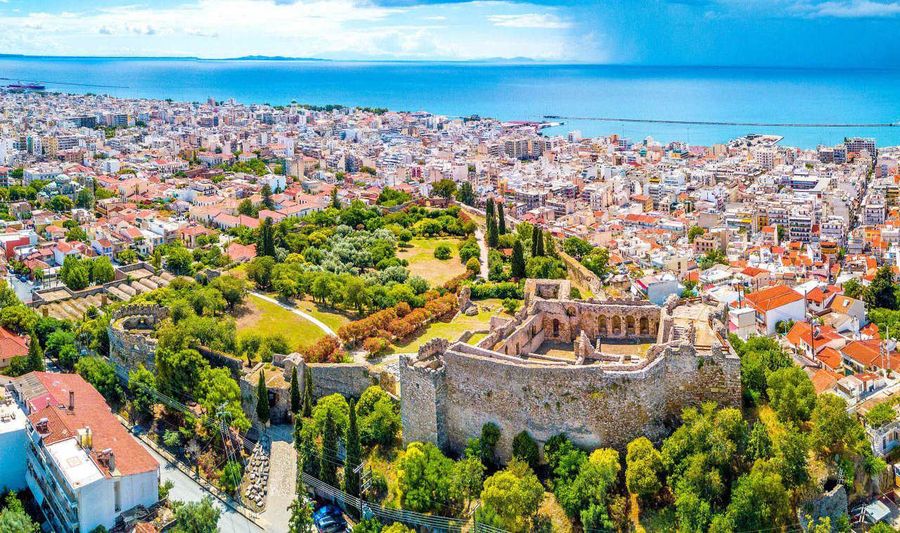
Patras
Patras, the third-largest city in Greece, is a dynamic destination known for its rich history, vibrant culture, and strategic location. Situated on the northern coast of the Peloponnese, Patras has long been a significant hub of commerce, connecting Greece to Western Europe and beyond. This bustling port city offers visitors a unique blend of ancient heritage, stunning landmarks, and lively modern attractions. From its famous carnival to its historical monuments, Patras is a city full of life and surprises, waiting to be explored.
A City Steeped in Historical Significance
Patras boasts a history that stretches back over 4,000 years, playing a key role in many of Greece’s major historical eras. The city was an important Mycenaean center and is said to have been founded by Patreus, from whom it derives its name. During Roman times, Patras flourished as a prosperous trading hub, and the city was later a crucial player in the Byzantine and Ottoman periods.
Patras’ most significant historical moment came in the Greek War of Independence in 1821, when it became a key site in the struggle against the Ottoman Empire. The Church of Saint Andrew, one of Greece’s largest and most important churches, holds the relics of Saint Andrew, the patron saint of the city, further cementing Patras’ spiritual and historical significance.
Top 5 Unique Characteristics of Patras
1. The Church of Saint Andrew (Agios Andreas)
One of the city’s most important landmarks is the Church of Saint Andrew, a massive Greek Orthodox basilica and one of the largest churches in the Balkans. The church is dedicated to Saint Andrew, who, according to tradition, was martyred in Patras. The modern church, built in the 20th century, is a stunning example of Byzantine architecture, with impressive domes, beautiful mosaics, and intricate icons. Inside the church, visitors can venerate the relics of Saint Andrew, making it an important pilgrimage site for Orthodox Christians and a key cultural landmark in Patras.
2. Patras Carnival (Patrino Karnavali)
Patras is renowned for hosting Greece’s largest and most famous carnival, the Patras Carnival. This annual celebration, which takes place in the weeks leading up to Lent, is a vibrant explosion of color, music, parades, and parties. The carnival includes grand parades with elaborate floats, street performances, and the famous Treasure Hunt game, attracting visitors from all over Greece and Europe. The festivities culminate in the burning of the Carnival King effigy, followed by fireworks. The Patras Carnival is one of the most joyful and energetic events in Greece, bringing the entire city to life.
3. The Roman Odeon
The Roman Odeon, built in 160 AD, is one of Patras’ most significant ancient monuments. This well-preserved theater was once a cultural center for the Roman city, hosting music performances, plays, and public gatherings. Today, the Odeon continues to serve as a cultural venue, hosting summer concerts and theatrical performances as part of the Patras International Festival. Its impressive stone structure and historical significance make it a must-visit for history lovers and anyone interested in the ancient world.
4. Patras Castle
Overlooking the city from a hilltop, the Patras Castle is a Byzantine-era fortress that offers stunning panoramic views of the city and the Gulf of Patras. Built in the 6th century on the ruins of an ancient acropolis, the castle played a key defensive role throughout history, including during the Greek War of Independence. Visitors can explore the castle’s walls, towers, and courtyards while enjoying spectacular views of the sea and surrounding landscape. The castle is a perfect spot for a scenic walk and to immerse yourself in Patras’ long and layered history.
5. The Rio-Antirrio Bridge
One of the most impressive modern landmarks in Patras is the Rio-Antirrio Bridge, officially known as the Charilaos Trikoupis Bridge. This stunning cable-stayed bridge, which connects the Peloponnese to mainland Greece, is one of the longest of its kind in the world. Spanning nearly 3 kilometers, the bridge is an engineering marvel and an iconic symbol of modern Greece. The bridge offers breathtaking views of the Gulf of Corinth, especially at sunset, and has made travel between the regions much more convenient.
Patras Today: A Vibrant Port City
Today, Patras is a thriving port city that serves as a gateway between Greece and Western Europe. Its bustling harbor connects Greece to Italy and other Mediterranean destinations, making it an important commercial hub. Patras is also home to a major university, giving the city a youthful, energetic atmosphere with a vibrant nightlife, cultural events, and a growing arts scene.
In addition to its rich history and modern amenities, Patras is known for its excellent food, with many local tavernas serving traditional Greek dishes such as souvlaki, moussaka, and fresh seafood. The city’s coastal location also makes it a great spot for water sports and beach activities, with nearby beaches offering a relaxing escape from the urban buzz.
Fun Facts About Patras
The Patras Carnival is one of the oldest in Europe, with roots dating back to the 19th century.
The Rio-Antirrio Bridge was completed just in time for the 2004 Athens Olympics, symbolizing Greece’s modern achievements.
Patras is the birthplace of Uzo, a famous Greek anise-flavored spirit.
The city is named after Patreus, a mythical hero who, according to legend, was one of the descendants of the gods.
Patras’ port is one of the busiest in Greece, handling thousands of passengers and cargo daily.
With its deep historical roots, vibrant cultural scene, and scenic beauty, Patras offers an exciting blend of the ancient and the modern. Whether you're exploring its ancient ruins, enjoying the lively atmosphere of its carnival, or simply taking in the stunning coastal views, Patras is a city full of charm and surprises.